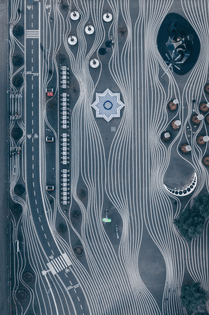Building for non-permanence and ambiguity
Buildings that will be rebuilt every twenty years to appear graceful and untainted. Websites under permanent consideration, in a state of perpetual renewal and adaption.
Consider the pavillon as an architectural type: it is open to interpretation and re-interpretation, it can accomodate various uses. It has no defining elements beyond its requirement to define a place – not even structural integrity or functional shelter. Its eventual disappearance is part of its plan. The pavillon is the solution to a problem that is to be defined by its use. It is oriented towards the future.
Strategies to consider:
- Define an open plan that allows for varied and shifting use cases.
- Reduce complexity, especially complexity of structure.
- Mostly define edges. Allow cognition to fill in blanks.
- Optimize for a simple construction process.
- Consider disassembly.
- Furnish with things that can be repurposed.
Also:
I think the most underrated aspects of architecture’s presence are pavillons and exhibition design. […] What’s interesting is that these ephemeral, nonpermanent architectures throughout history have very often created a lasting effect and contributed to the discourse of architecture. […] They become part of the canon and push the envelope of what architecture can be. […] Exhibition pavillons in the twentieth century acted as sites for the incubation of new forms of architecture that were sometimes so shocking original and so new that they were not even recognized as architecture at all.
— April Lamm [Ed.], Everything You Always Wanted to Know About Curating. Sternberg Press, 2010.
In Shinto, it is seen as important that the places in which kami are venerated be kept clean and not neglected. Through to the Edo period, it was common for kami shrines to be demolished and rebuilt at a nearby location in order to remove any pollutants and ensure purity.
— https://en.wikipedia.org/wiki/Shinto#Shrines
Once the first permanent shrines were built, Shinto revealed a strong tendency to resist architectural change, a tendency which manifested itself in the so-called 式年遷宮祭, the tradition of rebuilding shrines faithfully at regular intervals adhering strictly to their original design. (…) Ise Grand Shrine, still rebuilt every 20 years, is its best extant example.
Shrines were not completely immune to change, and in fact show various influences, particularly that of Buddhism, a cultural import which provided much of Shinto architecture's vocabulary. The 楼門, the haiden, 回廊, the tōrō, or stone lantern, and the komainu, or lion dogs (…) are all elements borrowed from Buddhism.



